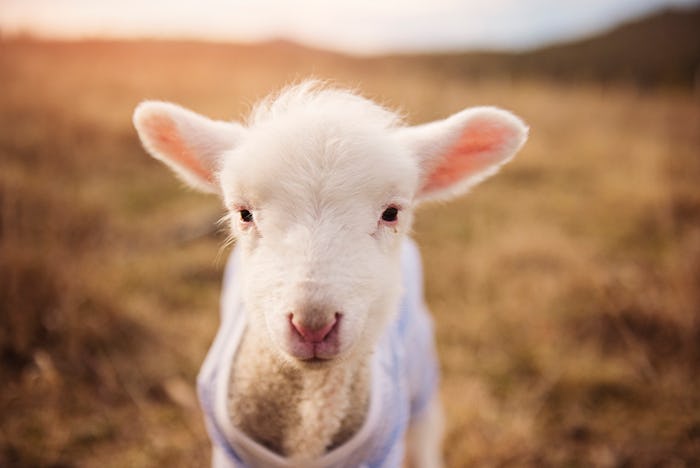Life
Scientists Grew A Premature Lamb In An Artificial Womb & It Will Blow Your Mind
When the world was introduced to the idea of artificial wombs in Aldous Huxley's Brave New World in 1932, his notions for growing human babies in glass containers was quite the pinnacle of science fiction. Just 46 years later, Louise Brown would be the first human baby born via conception by in vitro fertilization — literally, in glass. And now, in 2017, scientists have grown a lamb in an artificial womb — not once, but twice, pushing the limits of human reproduction and ectogenesis, the science of reproducing womb-like conditions, to places Huxley himself could have never imagined. We are truly living in the future.
In April, researchers at the Children's Hospital of Philadelphia (CHOP) successfully developed a fluid-filled "biobag" to help premature lambs develop outside the womb. "Our system could prevent the severe morbidity suffered by extremely premature infants by potentially offering a medical technology that does not currently exist," said study leader and fetal surgeon Dr. Alan W. Flake, in a statement from CHOP at the time.
The research and development of the biobag artificial womb has since been duplicated by a second group of scientists from the University of Western Australia, and Tohoku University Hospital, Japan in August. Premature lambs were incubated outside of the uterus for a week, thus reaching full term. The study was a resounding success, and the implications for helping human babies is incredible.
Science is pretty f*cking cool, but can we concede that it kind of looks like researchers are trying to sous vide a lamb? It's not exactly the most attractive-looking design, but what's more important is that these biobag artificial wombs allow premature fetuses — in this case, lambs — to reach full term within the conditions they should be naturally, thus increasing their chances for long-term survival.
When my son was born 6 weeks premature, our neonatologist told my husband and me that we should anticipate a NICU stay up until our son's original due date. Babies just aren't meant to be born early. And while an artificial womb wouldn't mean that a preemie baby would necessarily go home sooner, it does mean that micro-preemies who are born extremely early, in the range of 22 to 24 gestational weeks, stand a much higher chance of survival.
According to CHOP, approximately 30,000 births are considered "critically preterm" each year, meaning births prior to 26 weeks gestation. These extreme preterm births result in the leading cause of infant mortality in the United States, making up as much as one-third of all infant deaths each year. These artificial wombs could step in to where science has previously not been able, by giving these extremely early babies a second chance at healthy in utero development that can't be achieved by traditional neonatal treatment and NICU stays.
The biobag device itself is made from a plastic bag, however simple that might seem. Filled with synthetic amniotic fluid, the fetus's umbilical cord is connected to a machine outside of the device, where nutrients and oxygen are pumped into the fetus. But the artificial environment doesn't end at the biobag itself: The room is kept both dark and warm, and sounds of the mother's heartbeat are played on speakers within the room, NPR described. Scientists can also monitor the developing lamb fetus via ultrasound, as well.
The science of artificial wombs is really almost inconceivable, however terrible that pun might be — but I can't help but be amazed by what medical science has been able to achieve. Of course, there are also broader ethical implications to consider about the development of artificial wombs and what these devices mean for the future of human reproduction — but what a time to be alive that the very idea of an artificial uterus for human babies is a real possibility.
